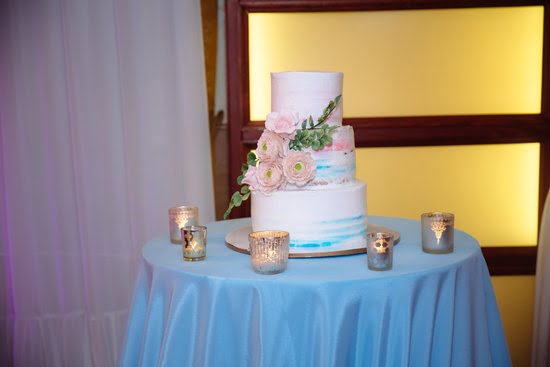Are you wondering how to make a cake flat for decorating? Achieving a level and even surface is crucial for beautifully decorated cakes. In this article, we will explore the importance of having a flat cake for decorating and provide tips and techniques for achieving the perfect base for your creative designs.
Decorating a cake that is not level can be quite challenging. Uneven surfaces can cause frosting and decorations to slide or appear lopsided, resulting in a less professional look. Whether you’re making a layered cake or simply want to frost a single layer, having a flat surface is essential for achieving a visually appealing and polished final product.
To ensure that your cakes are perfectly level, it’s important to understand the factors that contribute to their evenness. From choosing the right pan to properly preparing the batter and leveling the layers, there are several key steps involved in creating the ideal canvas for your cake decorating endeavors.
In this article, we will discuss various methods for achieving a flat cake, including selecting the right pan, preparing the batter for an even bake, leveling the cake layers, flattening the top of the cake, creating a stable base for decorating, troubleshooting uneven cakes, and providing final tips for ensuring a perfectly flat cake every time. Let’s delve into these essential techniques to elevate your cake decorating skills.
Choosing the Right Pan for a Level Cake
When it comes to baking a cake with a perfectly flat surface for decorating, the choice of cake pan plays a crucial role. Choosing the right pan can make all the difference in how your cake bakes and ultimately how it looks when it’s time to decorate. Here are some tips and recommendations for selecting the right cake pan that promotes even baking and results in a flat cake.
Material Matters
The material of the cake pan can greatly impact the evenness of the bake. For cakes with flat tops, consider using light-colored aluminum or non-stick steel pans, as they conduct heat evenly and promote uniform baking. Avoid using dark-colored or glass pans, as they tend to absorb more heat and can result in uneven baking.
Size and Shape
In addition to material, consider the size and shape of the cake pan. Choose a pan that matches the size specified in your recipe to ensure proper rising and even baking. It’s also important to select pans with straight sides rather than tapered ones, as straight sides help the cake rise evenly without sloping.
Consider Specialized Pans
There are specialized pans available that are designed specifically for creating level cakes, such as magic line pans with heating cores or bake-even strips that help regulate temperature and promote even baking. These specialized pans can be especially useful for achieving a perfectly level surface for decorating.
By carefully considering these factors when choosing a cake pan, you can set yourself up for success in achieving a level cake for decorating. Remember that selecting the right pan is just one step in the process of creating a beautifully decorated cake, but it is an important one that should not be overlooked.
Preparing the Cake Batter for an Even Bake
When it comes to baking a cake with a flat surface for decorating, the preparation of the cake batter plays a crucial role. Here are some tips to ensure that your cake batter results in an even bake:
- Measure Ingredients Accurately: Use a kitchen scale to measure ingredients by weight for the most accurate and consistent results.
- Room Temperature Ingredients: Ensure that all ingredients, especially butter and eggs, are at room temperature before mixing. This allows for better incorporation and a more even rise.
- Mixing Technique: When combining the wet and dry ingredients, avoid overmixing the batter. Overmixing can lead to excess air bubbles, which may cause an uneven rise during baking.
Additionally, consider the type of cake you are making. For example, if you are creating a sponge or chiffon cake, it is essential to properly whip the eggs to incorporate air and achieve the desired light texture. On the other hand, when making a pound or butter cake, creaming the butter and sugar together thoroughly is key for an even rise.
Following these steps will help ensure that your cake batter is well-prepared for an even bake, resulting in a flat top that is perfect for decorating.
Lastly, carefully pour your batter into the prepared cake pan(s), ensuring that it is evenly distributed across the pan. Smooth out any uneven areas with a spatula to promote an even bake throughout. By paying attention to these details in preparing your cake batter, you’ll be well on your way to achieving a perfectly flat surface for decorating.
Leveling the Cake Layers
Using a Cake Leveler
One of the easiest and most effective ways to level cake layers is by using a cake leveler. This tool consists of a thin wire or blade that can be adjusted to the desired height. To use a cake leveler, simply place the tool on top of the cake layer and adjust the height to match the lowest point of the cake. Carefully saw through the cake while keeping the leveler parallel to the surface, ensuring an even cut.
Using a Knife
For those who do not have a cake leveler, using a serrated knife is an alternative method for leveling cake layers. Start by placing your hand on top of the cake to stabilize it, then carefully slice off any uneven domed areas. Use even pressure and long strokes to create a flat surface. It may be helpful to rotate the cake in between cuts to ensure an even level all around.
Ensuring Even Thickness
Regardless of whether you use a cake leveler or a knife, it’s important to check that each layer is evenly leveled. Place one layer on top of another to compare their heights. If needed, make any additional adjustments to ensure that all layers are uniform in thickness.
This will result in a perfectly flat and stable base for decorating your cake. Remember that taking extra time at this step will pay off in achieving professional-looking and well-decorated cakes.
Techniques for Flattening the Cake Top
Flattening the top of a cake is essential for creating a smooth and even surface for decorating. There are several techniques that can be used to achieve a flat cake top, ensuring professional and visually appealing results.
One effective method is using a cake strip, which is a fabric strip that wraps around the cake pan to insulate it and promote even baking. By keeping the edges of the pan cooler, the cake rises evenly and prevents doming, resulting in a level top.
Another technique for flattening the cake top involves using a wet dish towel. Simply wet a dish towel with water, wring out any excess moisture, and then wrap it around the outside of the cake pan before placing it in the oven. The moisture from the towel helps regulate the temperature of the edges of the cake, promoting even baking and preventing doming. This method is especially useful for larger cakes that are more prone to uneven baking.
Additionally, some bakers use an inverted cake pan to weigh down and flatten the top of their cakes while they cool. Once the cake has finished baking, simply place another clean and dry cake pan over the top of it to gently press down while it cools. This technique can help create an evenly flat surface without having to trim or level off any excess from the top of the cake after baking.
By using one or more of these techniques for flattening a cake’s top before decorating, bakers can ensure that they have a smooth and level canvas on which to create their culinary masterpiece. These methods not only result in beautifully decorated cakes but also save time by eliminating the need for extensive leveling or trimming before applying frosting or fondant decorations.
Creating a Stable Base for Decorating
Before you start decorating your cake, it’s crucial to ensure that your cake is properly supported and level. Here are some tips and techniques for creating a stable base for decorating your cake:
- Use Cake Boards: Place your cake on a sturdy cake board that is the same size as your cake. This will provide a stable base and make it easier to transfer the cake.
- Leveling the Cake: Use a cake leveler or a long serrated knife to trim any uneven edges of the cake layers. This will ensure that each layer sits flat on top of one another.
- Use a Cake Turntable: Placing your cake on a turntable will allow you to easily rotate the cake as you decorate, ensuring even coverage and smooth frosting application.
It’s also important to invest in a good quality cake leveler or an adjustable wire cutter, which makes it easier to create an even surface for decorating.
Additionally, using a bubble or electronic level can help you ensure that your cakes are sitting completely flat before you begin decorating. Ensuring that your cakes are level not only makes them easier to decorate but also results in a professional-looking finished product.
By following these tips for creating a stable base for decorating, you’ll be well on your way to achieving beautifully decorated cakes every time.
Troubleshooting Uneven Cakes
Sometimes, despite our best efforts and careful preparation, a cake may still turn out uneven. There can be several reasons why this happens, from an oven that doesn’t distribute heat evenly to overmixing the batter. Fortunately, there are ways to troubleshoot and fix these issues to ensure you have a flat cake surface to work with for decorating.
One common issue that can lead to an uneven cake is an inaccurate oven temperature. To address this problem, it’s important to invest in an oven thermometer to ensure that the temperature setting on your oven matches the actual heat inside. Additionally, rotating your cake pans halfway through the baking process can also help promote even baking and prevent one side of the cake from rising higher than the other.
Another potential culprit for uneven cakes is overmixing the batter, which can cause air bubbles to form and result in an uneven rise. To avoid this problem, mix the batter until just combined and avoid overbeating. Using room temperature ingredients and gently folding in any additions like flour or chocolate chips can also help prevent overmixing.
In cases where despite all precautions a cake still bakes unevenly, don’t worry – you can always trim the top of the cake to level it out before decorating. This step ensures that you have a flat canvas to work with when adding frosting or other decorations.
| Troubleshooting Tips | Recommendations |
|---|---|
| Invest in an oven thermometer | To ensure accurate oven temperatures |
| Rotate cake pans during baking | Promotes even distribution of heat |
| Avoid overmixing batter | Mix until just combined to prevent uneven rise |
Final Tips for a Perfectly Flat Cake
In conclusion, achieving a flat cake for decorating is essential for producing a professional-looking and visually appealing final product. The importance of having a flat surface for decoration cannot be overstated, as it provides a stable and even canvas for icing, fondant, or other decorative elements. By following the tips and techniques outlined in this article, you can ensure that your cakes are consistently level and ready for decorating.
One of the key factors in making a cake flat for decorating is choosing the right pan to promote even baking. By selecting the proper cake pan and preparing the batter correctly, you can set the stage for a level cake that is primed for decoration. Additionally, using techniques such as leveling the cake layers and flattening the top can further enhance the evenness of your cake’s surface.
Furthermore, creating a stable base for decorating by using cake boards and levelers will also contribute to achieving a perfectly flat cake. By troubleshooting common issues that may cause uneven baking and implementing proper cooling and storing techniques, you can minimize deviations in your cakes’ surfaces. With these final tips in mind, you will be well-equipped to consistently produce flat cakes that are ideal for decorating.
Frequently Asked Questions
How Do You Make a Cake Flat?
To make a cake flat, one method is to use cake strips or damp towels wrapped around the cake pan before baking. This helps distribute heat evenly, preventing the cake from doming in the center.
How Do You Keep a Cake From Rising in the Middle?
Keeping a cake from rising in the middle can be achieved by using a lower temperature when baking and avoiding overmixing the batter. Additionally, tapping the filled cake pan on the counter before baking can help release any air bubbles.
How Do You Reduce Cake Doming?
To reduce cake doming, it’s important to use an oven thermometer to ensure the correct temperature for baking. Another tip is to bake the cake on a lower rack in the oven to encourage even distribution of heat and prevent excessive rising in the middle.

Welcome to our cake decorating blog! My name is Destiny Flores, and I am the proud owner of a cake decorating business named Cake Karma. Our mission is to provide delicious, beautiful cakes for all occasions. We specialize in creating custom cakes that are tailored specifically to each customer’s individual needs and tastes.





